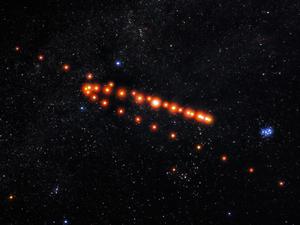Glossary term: 冲
Description: 当两个天体在观测者看来排成一条直线或接近一条直线,并且在天空中位于相反方向时,谓之为“冲”。观测者并不需要能同时看到这两个物体。例如,在满月时,太阳、地球上的观测者和月亮排成一线,因此月亮可见部分的表面完全被太阳照亮——除非三者完美对齐,在这种情况下会发生月食。当行星、彗星或小行星处于冲时,通常是指与太阳和地球上的观测者的关系。当行星处于冲时,它将显得特别明亮,在移动方向上出现“逆行”(因为地球在其较内侧轨道上移动得更快),并且离地球特别近。
Related Terms:
See this term in other languages
Term and definition status: The original definition of this term in English have been approved by a research astronomer and a teacher The translation of this term and its definition is still awaiting approval
The OAE Multilingual Glossary is a project of the IAU Office of Astronomy for Education (OAE) in collaboration with the IAU Office of Astronomy Outreach (OAO). The terms and definitions were chosen, written and reviewed by a collective effort from the OAE, the OAE Centers and Nodes, the OAE National Astronomy Education Coordinators (NAECs) and other volunteers. You can find a full list of credits here. All glossary terms and their definitions are released under a Creative Commons CC BY-4.0 license and should be credited to "IAU OAE".
If you notice a factual or translation error in this glossary term or definition then please get in touch.
Related Media
火星逆行
Credit: Rob Kerby Guevarra/IAU OAE (CC BY 4.0)
License: CC-BY-4.0 Creative Commons 署名 4.0 国际 (CC BY 4.0) icons









